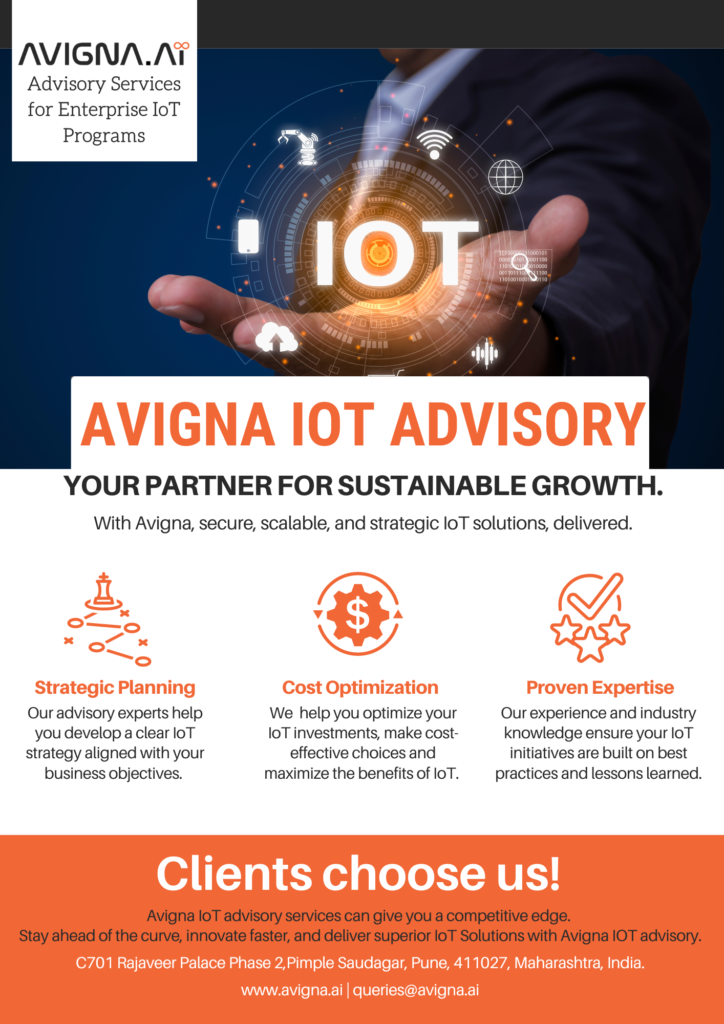Building prototypes for Internet of Things (IoT) solutions is easier said than done. With complex technologies integrating hardware, software, connectivity, and more – how does one efficiently validate an IoT idea? One of the most critical stages is IoT prototyping – creating preliminary versions of devices to test functionality and receive feedback before launching final products. In this IoT prototyping guide, I will explain the best practices and methods for IoT prototyping and testing to ensure your connected devices are ready for the market.
What is IoT Prototyping?
IoT prototyping refers to quickly creating preliminary models or prototypes of an Internet of Things concept or solution. These prototypes allow developers to test whether their idea is functionally and technically feasible before undertaking large-scale product development. Early-stage prototyping helps identify potential issues, refine requirements, and determine if your solution delivers on its intended purpose.
IoT prototypes still need to be finished products ready for commercial use. They are working models that evaluate critical aspects of a proposed IoT system, like usability, connectivity, sensing capabilities, and data processing. The goal is to iteratively test and improve the prototype through multiple feedback cycles until the core functionality is proven. Once validated, prototyping outputs can guide production-ready IoT hardware and software solutions engineering.
Setting the Stage: IoT Infrastructure Overview
Before diving deeper into IoT prototyping guide methods and testing procedures, let’s briefly review core IoT infrastructure and topology. Most IoT ecosystems comprise:
- Hardware Device: A physical computing device with various sensors to collect real-world data. It may include chips, microcontrollers, and wireless radios.
- User Interface: The frontend interface for users, administrators, and applications to interact with the system. It could be a mobile/web app, dashboard, or physical display/controls.
- Backend Services: Cloud-based services and infrastructure that securely stores, processes, and analyzes sensor data. Standard functions include data cleansing, analytics algorithms, and rule engines.
- Connectivity: The networking layer for devices to connect to the backend and transfer data. Technologies like WiFi, BLE, LoRaWAN, 5G, and Ethernet enable long and short-range communications.
Additional elements may involve integrating third-party services, simulating natural environments, and testing edge/fog deployments to replicate full-scale conditions. The goal is to have a vertically integrated system from end to end, like the eventual production solution.
Why Prototype IoT Solutions?
There are several benefits to prototyping IoT solutions:
- Risk Mitigation: IoT projects involve unpredictability. Prototyping provides early insights into value, technology, user feedback, and security to refine priorities accordingly.
- End-to-end Testing: Prototypes test integration of hardware, software, data collection, communication protocols, and machine learning models before mass production.
- Early Access to Real Data: Gathering accurate data early optimizes hardware and algorithms, improving accuracy and saving time/money versus separate development.
- User Experience Refinement: Prototypes collect user feedback to refine usability, design, and experience before production.
- Market Validation: Prototypes help validate if an idea satisfies market needs before significant investment in production.
IoT Prototyping Methods
There are several popular techniques utilized for IoT prototyping projects depending on requirements:
- Proof of Concept Prototypes: Minimum viable prototypes demonstrating a core tech feature using off-the-shelf boards and dev kits. Low investment; high risk.
- Throwaway Prototypes: Quick one-off prototypes discarded after validating a specific aspect and created from easy-to-assemble components on breadboards.
- Incremental Prototypes: Adding iterative layers of complexity through multiple revisions. Each phase incorporates feedback and functionality from previous versions.
- Evolutionary Prototypes: The initial prototype morphs over time into the final product design through successive changes. Code and components are reused incrementally.
- Commercial Prototypes: Near-final prototypes resembling planned products in looks, features, and performance.
The agile process allows rapidly iterating prototyping methods based on early feedback without heavy upfront investment. Developers must determine the appropriate technique based on time, budget, technical complexity, and project goals.
Suggested Reading: Understanding the Build-Operate-Transfer (BOT) Model
IoT Prototyping Tools and Platforms
Various prototyping tools and platforms from different vendors support developing initial IoT concepts and device mockups. Some standard options include:
- Arduino/ESP boards: Widely used MCU boards ideal for rapid prototyping physical devices. Open-source toolchains ease development.
- Raspberry Pi: Powerful single-board computers running Linux. Suitable for prototyping edge gateways and complex IoT systems.
- Intel Galileo/Edison: Formerly an Intel offering tailored for IoT device prototyping and testing with the Yocto Project.
- Particle: Full-stack IoT development platform simplifying hardware/software integration using Particle Dev tools.
- Microsoft Azure IoT: Cloud-based dev environment for building, testing, and deploying IoT prototypes at scale.
- AWS IoT: Amazon’s cloud platform provides services for securely connecting, managing, and scaling IoT applications.
- Exosite Atom IDE: Low-code GUI environment assisting rapid creation of connected product proofs of concept.
- PTC ThingWorx: End-to-end IoT application development suite to prototype connectivity and solutions efficiently.
Prototyping Tools like Tinkercad, Autodesk Fusion 360, or Altium Designer further streamline printed circuit board layout and mechanical modeling tasks. Select the most suitable tools based on your specific project goals.
IoT Prototyping Best Practices
Following best practices can help you develop high-quality IoT prototypes efficiently:
- Define Clear Objectives and Requirements – Create well-defined success criteria before starting to keep the project scoped.
- Use Agile Methodologies – Iteratively develop prototypes in short cycles, rapidly validating each increment of functionality.
- Fail Fast and Often – Identifying flaws faster to refine concepts versus struggling later is better. Learn from mistakes.
- Focus on UI/UX First – Design engaging mockups and flows to effectively test usability before adding complex hardware.
- Modular Design – Isolate logic into plug-and-play modules that can be tested or replaced independently.
- Build for Portability – Plan hardware development around standardized platforms to maximize cross-compatibility.
- Test Edge Cases – Throw common and uncommon usage patterns, error conditions, and high volumes at prototypes.
- Validate Assumptions – Evaluate if prototypes correctly address envisioned customer/business needs through real-world user evaluation.
- Iterate based on Feedback – Incorporate valuable insights from prototyping testing cycles into subsequent revisions.
IoT Prototyping Methodologies
Let’s look at some best practices for IoT prototyping that can be used based on project requirements:
- Agile Prototyping: An iterative agile process focused on continuous improvement where requirements and prototypes evolve through collaboration. Cross-functional teams build and test increments rapidly. Common in fast-paced development environments.
- Rapid Prototyping: Similar to Agile Pro, types are created at an accelerated pace with minimal planning to obtain rapid feedback using readily available components—low fidelity.
- Evolutionary Prototyping: Starts with rough prototypes and evolves them over time. Initial versions are intended to be built upon, not replaced, incorporating increments of new functionality in each iteration.
- Throwaway Prototyping: Exploratory prototypes are meant to be dispensed after review to aid in design. They leverage simple, inexpensive components to answer specific questions before expending resources.
- Commercial Prototyping: Generally, later-stage project prototypes emulate production specs and quality. They are used for refining details, manufacturability evaluations, and certification testing before ramping production.
The prototyping methodology depends on unique constraints like timelines, budgets, risk tolerance, project phase, and the role of prototypes. Applying hybrid approaches tailored to organizational needs aids IoT solution validation best.
IoT Prototyping and Testing
Testing connected products thoroughly from the initial stages helps catch issues proactively before mass deployments and updates. Key aspects to evaluate include:
- Functional Testing: Validates basic operations like sensor performance, firmware updates, and GUI functionality to meet outlined specs. Automated testing suites accelerate regressions.
- Integration Testing: Confirms end-to-end workflows and that each subsystem interfaces and shares data as intended when combined into a holistic prototype.
- Security Testing: Analyzes APIs, backend services, device firmware, and communication protocols for vulnerabilities to achieve robust protection before launch.
- Usability Testing: Real people representatively evaluate UI/UX mockups and provide actionable qualitative feedback in controlled environments for targeted improvement.
- Interoperability Testing: Mimics numerous configurations in a laboratory to identify compatibility snags when devices from various brands interact in various industry ecosystems.
- Stress and Load Testing: Scalability is examined by simulating heavy concurrent usage loads and processing large datasets to uncover bottlenecks or stability concerns under demanding conditions.
- Cross-browser Testing: Browser compatibility defects are uncovered by running test suites on all major browsers, mobile platforms, and OS versions to safeguard a seamless experience everywhere.
- Localization Testing: Checks software that caters to global audiences by appropriately supporting localized interfaces, regional formats, and multiple languages without flaws.
- Exploratory Testing: Manual technique involving ad-hoc experimentation by testers improvising new test ideas on their feet to think outside the box and consider uncommon factors.
- Device and Field Testing: Real-world deployment trials are performed to monitor prototypes functioning under actual environmental variables like varying temperature pressure over extended periods.
Suggested Reading: Difference between Cloud, IoT Cloud, Industry Cloud, Industrial Cloud
Cultivating A Test-Driven Mindset
For many IoT builders accustomed to agile software development, the need to prototype and test hardware also demands a shift in engineering mindsets. Practicing test-driven development challenges assumptions celebrates failure as feedback, and compels up-front design thinking.
IoT prototyping guide for cultivating a test-driven culture:
- Allocate separate prototyping sprints between software releases
- Incentivize documentation of lessons learned from prototyping initiatives
- Build prototyping competence through cross-disciplinary teams
- Celebrate proof of concept ‘graduations’ publicly
- Enable fast experimentation through flexible development environments
- Empower developers to identify what to prototype based on software testing gaps
The time investment required to test IoT solutions rigorously can seem daunting initially. However, the compound benefits of lower risk, higher reliability, and accelerated time-to-value heavily outweigh initial costs across the deployment lifecycle.
Forge Ahead in IoT Innovation with Avigna
By rigorously prototyping and validating the core functions of IoT devices and systems before manufacturing, innovators can reduce risks of failure while accelerating new products to market. Embracing best practices for IoT prototyping from initial planning through iterative testing optimizes the development process from concept to reality. With the growth of connected technologies, prototyping will remain vital to transform innovative ideas into real-world solutions.
At Avigna, we are the leaders in IoT Prototyping and Testing. Our award-winning IoT platform ‘Avigna Cube’ proves our IoT expertise. Connect with us at queries@avigna.ai to connect with our IoT experts.




